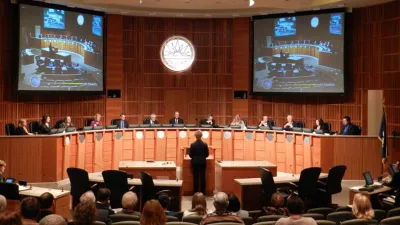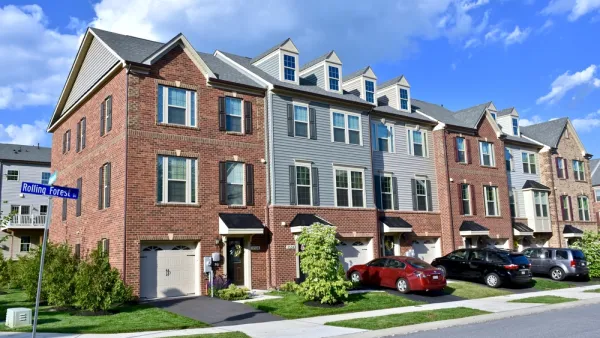The unchecked power of individual city councilmembers has, in some cases, restricted housing development and fueled corruption.

Decisions about development and upzoning have, historically, been the domain of local leaders and city councilmembers. Now, reports Henry Grabar for Slate, it appears that the tide of support for hyper-local decision making has started to turn. The effect of the longstanding policy of "member deference," writes Grabar, "has been to restrict the creation of new housing, foster corruption, and entrench boundaries of race and class."
"Theoretically, members of big-city governing bodies only have a say over big changes such as neighborhood upzonings—that is, when builders are allowed to construct taller, denser structures than before. In reality, however, thanks to outdated zoning codes and other city-run approvals, each local representative exerts a great degree of power over even minute changes to the cityscape." For cities, the system makes sense, Grabar says. "It’s hard for cities to raise money to address their many social problems, and it’s complicated to duke it out at city meetings for a share of the pie. Pay-to-play policies for new construction can directly funnel millions of dollars into new local assets such as community centers, if that’s what a council member or an alderman wants." But by allowing this level of control at the neighborhood scale, Grabar argues, "cities have internally recreated the fragmented, selfish governance pattern that characterizes their suburbs."
As "advocates have mostly given up on swaying city politicians," zoning reform has moved to the state level. In California, a state policy gives "blanket permission for accessory dwelling units" in a move that "overruled hundreds of city prohibitions, and paved the way for an explosion in small-scale infill housing in cities like Los Angeles." Oregon famously preempted local single-family zoning restrictions, and other states could pass similar laws limiting local control over zoning decisions in an effort to increase housing affordability.
FULL STORY: City Councils Are Villains of the Housing Crisis

National Parks Layoffs Will Cause Communities to Lose Billions
Thousands of essential park workers were laid off this week, just before the busy spring break season.

Retro-silient?: America’s First “Eco-burb,” The Woodlands Turns 50
A master-planned community north of Houston offers lessons on green infrastructure and resilient design, but falls short of its founder’s lofty affordability and walkability goals.

Delivering for America Plan Will Downgrade Mail Service in at Least 49.5 Percent of Zip Codes
Republican and Democrat lawmakers criticize the plan for its disproportionate negative impact on rural communities.

Test News Post 1
This is a summary

Test News Headline 46
Test for the image on the front page.

Balancing Bombs and Butterflies: How the National Guard Protects a Rare Species
The National Guard at Fort Indiantown Gap uses GIS technology and land management strategies to balance military training with conservation efforts, ensuring the survival of the rare eastern regal fritillary butterfly.
Urban Design for Planners 1: Software Tools
This six-course series explores essential urban design concepts using open source software and equips planners with the tools they need to participate fully in the urban design process.
Planning for Universal Design
Learn the tools for implementing Universal Design in planning regulations.
EMC Planning Group, Inc.
Planetizen
Planetizen
Mpact (formerly Rail~Volution)
Great Falls Development Authority, Inc.
HUDs Office of Policy Development and Research
NYU Wagner Graduate School of Public Service





























